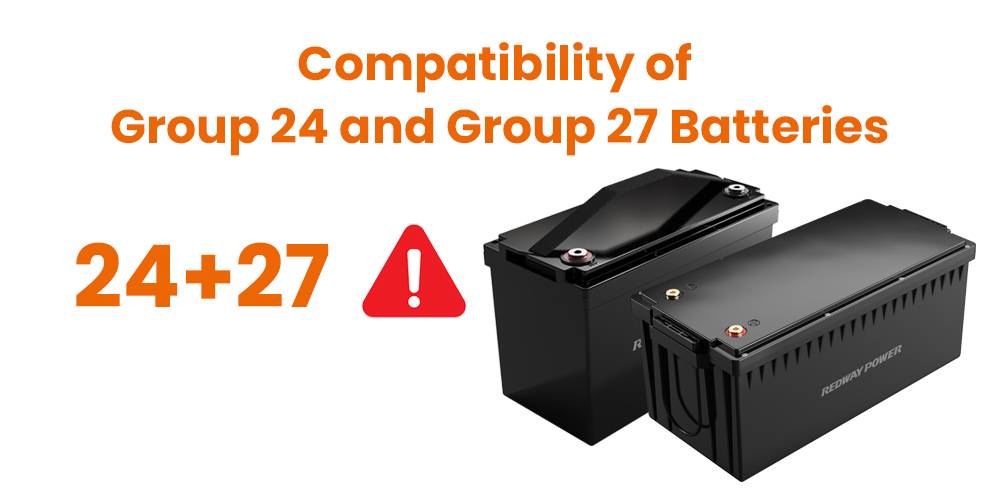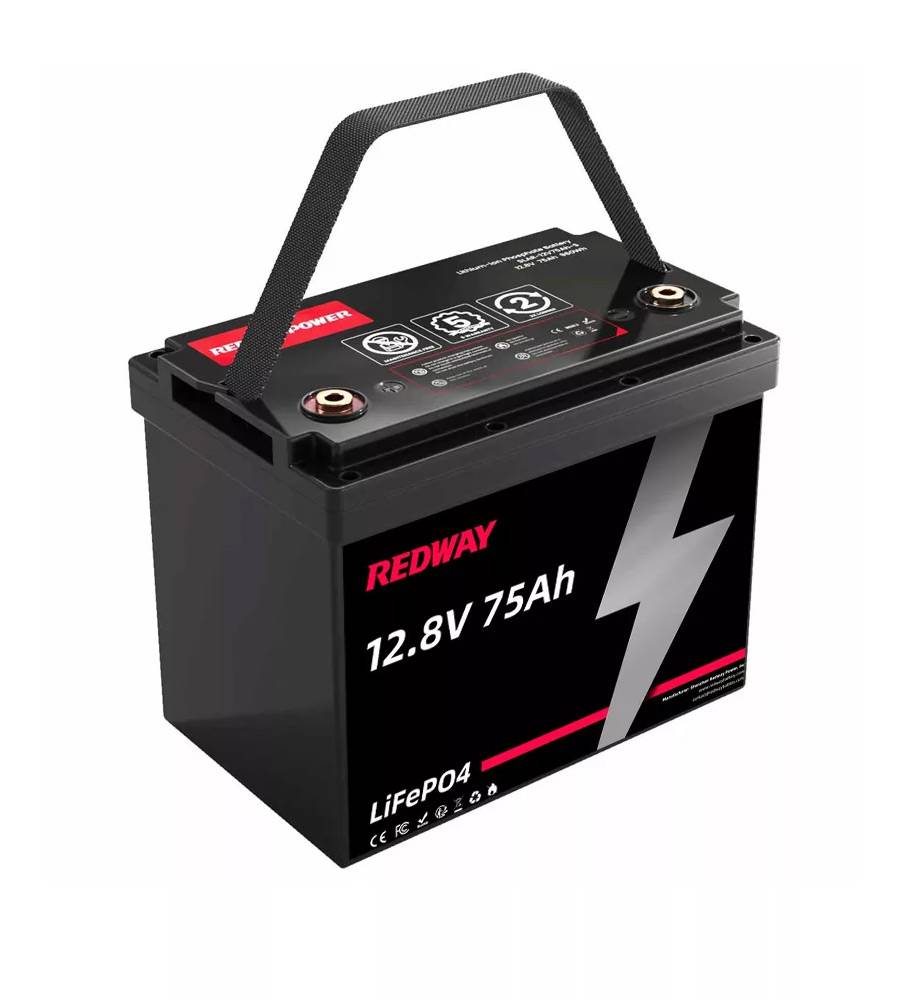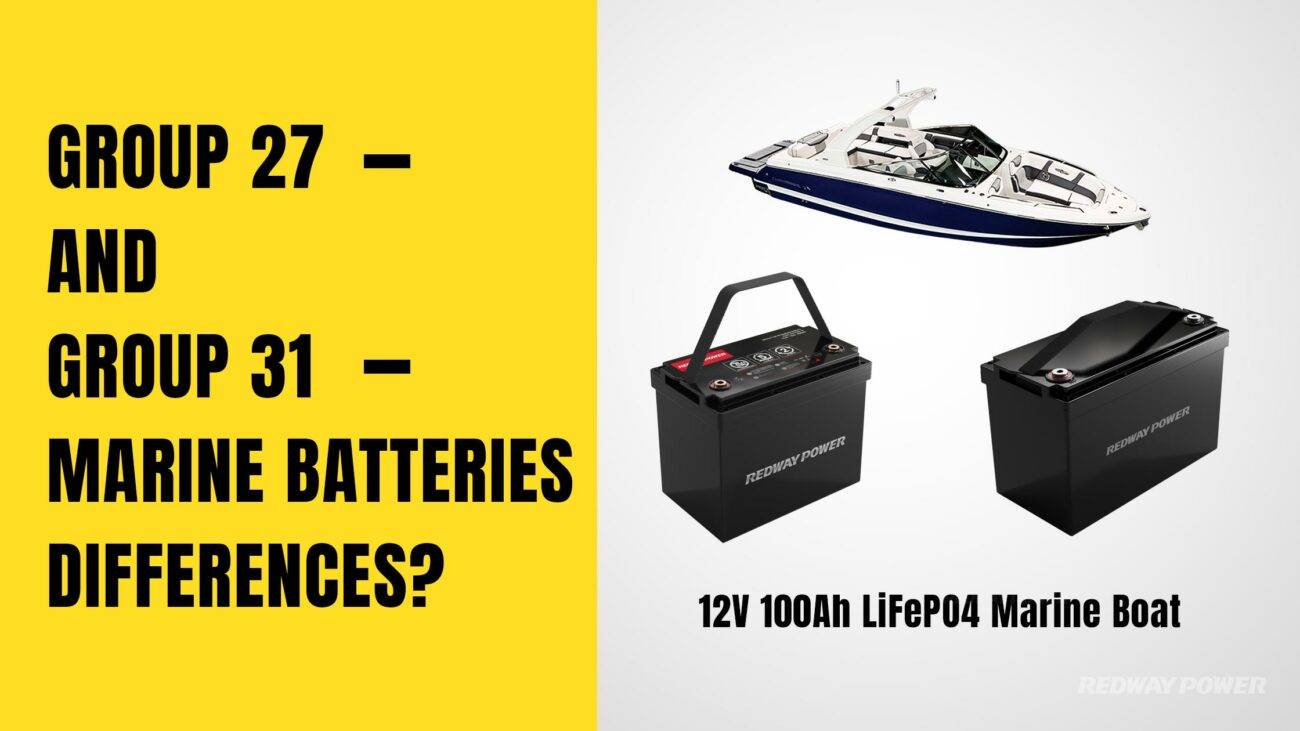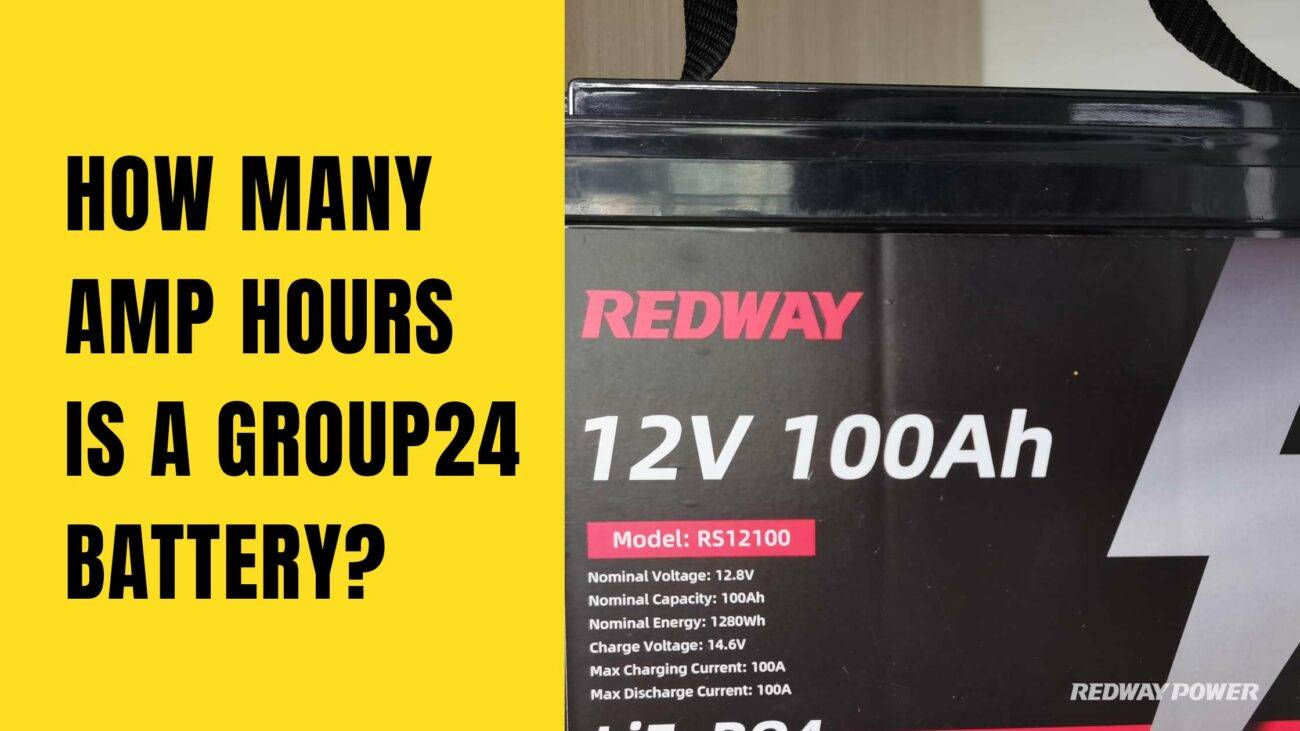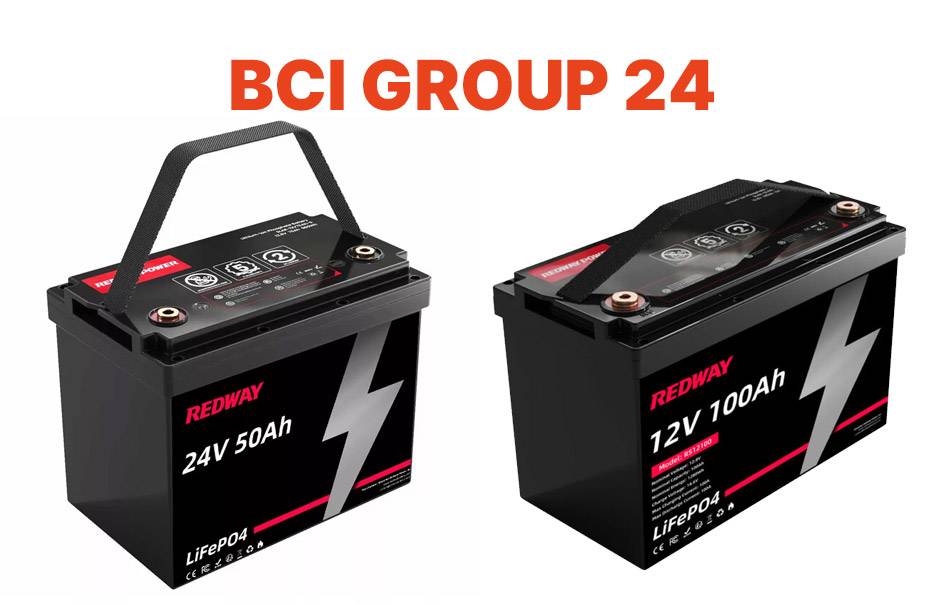- Lithium Golf Cart Battery
- Forklift Lithium Battery
-
48V
- 48V 210Ah
- 48V 300Ah
- 48V 420Ah (949 x 349 x 569 mm)
- 48V 420Ah (950 x 421 x 450 mm)
- 48V 456Ah
- 48V 460Ah (830 x 630 x 590 mm)
- 48V 460Ah (950 x 421 x 450 mm)
- 48V 460Ah (800 x 630 x 600 mm)
- 48V 460Ah (820 x 660 x 470 mm)
- 48V 500Ah
- 48V 560Ah (810 x 630 x 600 mm)
- 48V 560Ah (950 x 592 x 450 mm)
- 48V 600Ah
- 48V 630Ah
-
48V
- 12V Lithium Battery
12V 150Ah Lithium RV Battery
Bluetooth App | BCI Group 31
LiFePO4 Lithium
Discharge Temperature -20°C ~ 65°C
Fast Charger 14.6V 50A
Solar MPPT Charging - 24V Lithium Battery
- 36V Lithium Battery
- 48V Lithium Battery
-
48V LiFePO4 Battery
- 48V 50Ah
- 48V 50Ah (for Golf Carts)
- 48V 60Ah (8D)
- 48V 100Ah (8D)
- 48V 100Ah
- 48V 100Ah (Discharge 100A for Golf Carts)
- 48V 100Ah (Discharge 150A for Golf Carts)
- 48V 100Ah (Discharge 200A for Golf Carts)
- 48V 150Ah (for Golf Carts)
- 48V 160Ah (Discharge 100A for Golf Carts)
- 48V 160Ah (Discharge 160A for Golf Carts)
-
48V LiFePO4 Battery
- 60V Lithium Battery
-
60V LiFePO4 Battery
- 60V 20Ah
- 60V 30Ah
- 60V 50Ah
- 60V 50Ah (Small Size / Side Terminal)
- 60V 100Ah (for Electric Motocycle, Electric Scooter, LSV, AGV)
- 60V 100Ah (for Forklift, AGV, Electric Scooter, Sweeper)
- 60V 150Ah (E-Motocycle / E-Scooter / E-Tricycle / Tour LSV)
- 60V 200Ah (for Forklift, AGV, Electric Scooter, Sweeper)
-
60V LiFePO4 Battery
- 72V~96V Lithium Battery
- Rack-mounted Lithium Battery
- E-Bike Battery
- All-in-One Home-ESS
- Wall-mount Battery ESS
-
Home-ESS Lithium Battery PowerWall
- 24V 100Ah 2.4kWh PW24100-S PowerWall
- 48V 50Ah 2.4kWh PW4850-S PowerWall
- 48V 50Ah 2.56kWh PW5150-S PowerWall
- 48V 100Ah 5.12kWh PW51100-F PowerWall (IP65)
- 48V 100Ah 5.12kWh PW51100-S PowerWall
- 48V 100Ah 5.12kWh PW51100-H PowerWall
- 48V 200Ah 10kWh PW51200-H PowerWall
- 48V 300Ah 15kWh PW51300-H PowerWall
PowerWall 51.2V 100Ah LiFePO4 Lithium Battery
Highly popular in Asia and Eastern Europe.
CE Certification | Home-ESS -
Home-ESS Lithium Battery PowerWall
- Portable Power Stations
Can I Mix Group 24 and Group 27 Batteries?
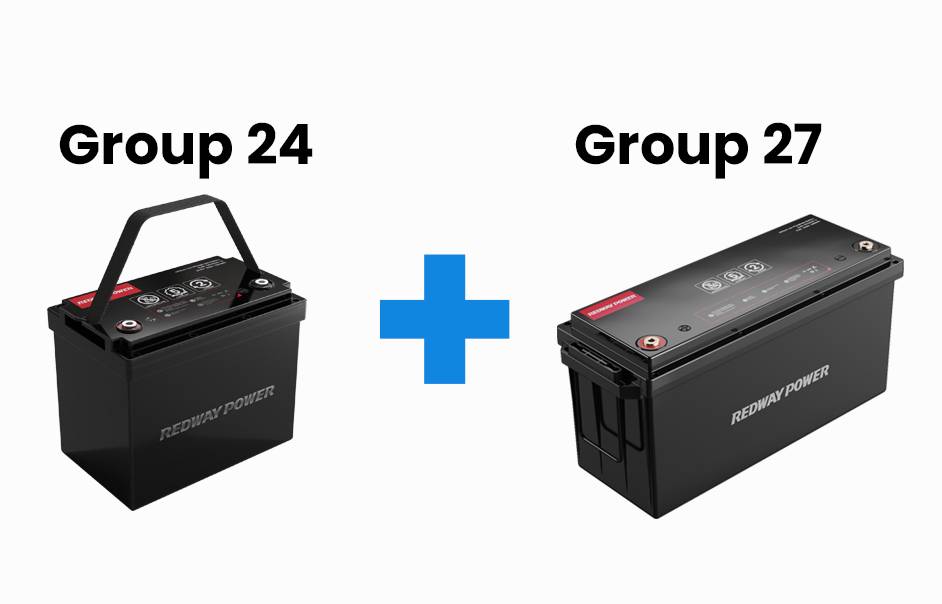
Mixing Group 24 and Group 27 batteries is generally not recommended due to potential fitting issues and performance concerns. While voltage compatibility exists, mismatched sizes may affect overall efficiency and safety. Adhering to proper installation procedures and consulting manufacturer guidelines ensures optimal battery setup and minimizes risks.
Get Your Custom B2B Quote for 12V 100Ah Lithium Battery Group 24: Click HERE.
Get Your Custom B2B Quote for 12V 90Ah Lithium Battery Group 27 / Group 24: Click HERE.
Understanding Battery Groups
Batteries are categorized into groups based on their physical dimensions and capacity. The Group 24 and Group 27 designations refer to specific sizes:
| Battery Group | Length (inches) | Width (inches) | Height (inches) | Typical Capacity (Ah) |
|---|---|---|---|---|
| Group 24 | 10.25 | 6.75 | 8.75 | 70-85 |
| Group 27 | 12.06 | 6.81 | 8.56 | 90-110 |
Why Mixing Can Be Problematic
- Capacity Differences: The varying capacities mean that the larger Group 27 battery will discharge slower than the smaller Group 24 battery, leading to potential over-discharge of the smaller unit.
- Charging Issues: When charged together, the different charge acceptance rates can lead to inefficient charging cycles, risking damage to one or both batteries.
- Lifespan Reduction: Mismatched batteries can cause increased wear and tear, ultimately reducing the lifespan of both batteries.
Advantages and Disadvantages of Group 24/27 Batteries
Choosing between Group 24 and Group 27 batteries involves weighing their advantages and disadvantages. Let’s break down the key factors.
Also check Group 27 Vs 24 Batteries
Group 24 Batteries Advantages
Group 24 batteries are compact, cost-effective, and versatile, fitting well in automotive, marine, and RV applications. Despite their smaller size, they offer sufficient power and capacity, making them suitable for various electrical systems and devices.
Group 24 Batteries Disadvantages
When considering Group 24 batteries, it’s important to note several drawbacks. These include limited capacity, shorter lifespan, and performance limitations in high-demand applications. Additionally, their smaller size may lead to higher discharge rates and less versatility compared to larger battery groups, necessitating careful consideration based on specific application needs.
Group 27 Batteries Advantages
Group 27 batteries boast several advantages over flooded lead-acid counterparts. These include increased capacity, extended lifespan, enhanced performance in heavy-duty applications, compatibility with various devices, and improved durability. Their larger size allows for longer run times and greater power output, making them ideal for automotive, marine, and RV applications.
Group 27 Batteries Disadvantages
Group 27 batteries have drawbacks to consider: larger size makes them heavier and harder to install, they tend to be more expensive upfront, compatibility issues with some devices, and limited availability. Careful evaluation of size, cost, and compatibility is essential for selecting the right battery for your needs.
Considerations When Choosing Group 24 or 27
Both responses provide valuable insights into the considerations when choosing between Group 24 and Group 27 batteries. However, the current featured snippet offers specific details about each battery type’s characteristics, such as cost-effectiveness for Group 24 and higher capacity for Group 27. This specificity may make it more informative and suitable for a Google featured snippet compared to the provided answer, which offers a more general overview of the decision-making process.
Compatibility of Group 24 and Group 27 Batteries
Mixing Group 24 and Group 27 batteries may cause fitting issues due to size differences. While voltage compatibility exists, mixing is generally not recommended for optimal performance and safety. However, some argue it offers benefits like increased capacity. Prioritize compatibility and consult manufacturer guidelines for the best battery selection and installation practices.
Let’s explore whether mixing them is a viable option.
- Physical Dimensions:
- Group 27 is slightly larger than Group 24, potentially causing fitting issues in a single battery compartment.
- Electrical Compatibility:
- No issues in mixing regarding voltage (both 12 volts) and similar amp-hour ratings.
- Expected to work together without causing damage or performance problems.
- Recommendation Against Mixing:
- Generally not recommended to mix battery groups.
- Optimal performance and longevity ensured with batteries of the same group size.
- Safety Precautions:
- Follow safety precautions during handling and installation.
- Consult manufacturer guidelines and seek expert advice if uncertain.
- Advantages and Risks:
- Some argue mixing offers benefits like increased capacity or flexibility.
- Weigh potential advantages against risks before deciding.
- Conclusion on Compatibility:
- Choosing compatible batteries of the same group size is the safest option.
- Prioritize optimal performance and peace of mind.
In summary, while electrical compatibility exists, it’s generally not recommended to mix Group 24 and Group 27 batteries. Optimal performance and safety are best ensured by selecting batteries of the same group size.
Get Your Custom B2B Quote for 12V 100Ah Lithium Battery Group 24: Click HERE.
Get Your Custom B2B Quote for 12V 90Ah Lithium Battery Group 27 / Group 24: Click HERE.
How Mixing Battery Types Affects Performance
When Do Safety Hazards Occur with Mixed Batteries
What Problems Arise from Mixing Different Voltage Batteries
Why Mixing Voltages is Problematic for Electronics
Safety Precautions when Mixing Battery Groups
When mixing battery groups like Group 24 and Group 27, prioritize safety. Ensure compatible voltages and capacities to prevent damage and maintain consistent performance. Avoid mixing old and new batteries and follow proper installation procedures to prevent short circuits. These precautions ensure optimal performance and longevity for your battery setup.
Let’s outline essential precautions to ensure a secure battery setup.
- Voltage Compatibility:
- Ensure compatibility of mixed batteries’ voltages.
- Mismatched voltages may cause charging imbalances, potentially leading to battery damage or failure.
- Capacity Matching:
- Match capacities to avoid discharge imbalances.
- Higher capacity differences can strain batteries, reducing overall performance and lifespan.
- Consider Age and Condition:
- Pay attention to the age and condition of batteries.
- Mixing new with old or well-maintained with poorly-maintained can impact overall efficiency.
- Proper Installation Procedures:
- Follow correct installation procedures.
- Ensure secure and tight connections, insulate exposed terminals to prevent short circuits.
Prioritizing safety by adhering to voltage compatibility, capacity matching, considering battery age, and following proper installation procedures minimizes risks associated with mixing battery groups. This approach ensures optimal performance and longevity for your battery setup.
Benefits of Mixing Battery Groups
Mixing battery groups, such as Group 24 and Group 27, offers benefits like increased capacity, improved performance, flexibility, and cost savings. However, compatibility concerns must be considered to avoid imbalanced charging or discharging rates. Prioritizing compatibility and safety precautions ensures successful and efficient battery combinations for diverse applications.
Let’s explore the advantages and potential drawbacks.
- Increased Overall Capacity:
- Combine different groups for higher total energy storage capacity.
- Achieve a more robust power supply for specific needs.
- Improved Performance and Efficiency:
- Distribute workload across multiple batteries for enhanced efficiency.
- Extend battery lifespan, resulting in longer run times and better overall performance.
- Flexibility in Space Requirements:
- Different group sizes provide flexibility in space utilization.
- Adapt to available space or specific applications without compromising energy storage capabilities.
- Cost Savings:
- Utilize existing batteries from different groups, saving costs.
- Opt for a more economical approach by maximizing the life of batteries still in good condition.
- Drawbacks and Compatibility Concerns:
- Compatibility issues between different battery types may lead to imbalanced charging or discharging rates.
- Potential drawbacks emphasize the importance of ensuring compatibility and taking necessary safety precautions.
While mixing battery groups can offer advantages in capacity, flexibility, and cost savings, it’s crucial to balance these benefits against potential drawbacks. Prioritize compatibility and safety precautions to ensure a successful and efficient battery combination.
Common Misconceptions about Mixing Battery Groups
Dispelling misconceptions about mixing Group 24 and Group 27 batteries is crucial for informed decisions. Contrary to common beliefs, properly mixed batteries do not damage the electrical system or compromise performance. Warranty voiding and safety risks are also misconceptions. Following compatibility and safety measures can successfully enhance system efficiency without negative consequences. Always consult manufacturers’ guidelines for reliable setups.
Let’s address common myths surrounding this practice.
- Electrical System Damage:
- Misconception: Mixing battery groups damages the electrical system.
- Reality: Properly mixed batteries, meeting voltage requirements, pose no harm to the electrical system when both are in good condition.
- Reduced Performance Concerns:
- Misconception: Mixing battery groups compromises overall performance.
- Reality: Boat or RV systems are designed to accommodate different sizes. Optimal performance is maintained with proper charging and well-maintained batteries.
- Warranty Voiding Misbelief:
- Misconception: Combining battery groups voids warranties.
- Reality: Warranty policies vary; consult specific documentation for accurate information on actions that may void the warranty.
- Safety Risks Clarification:
- Misconception: Mixing battery groups increases safety risks.
- Reality: Properly mixing Group 24 and Group 27 batteries, following guidelines, ensures safe operation without inherent safety risks.
- Conclusion on Mixing Success:
- Mixing batteries can enhance capacity and system efficiency.
- Follow compatibility and safety measures to mix batteries successfully without negative consequences.
- Consult Manufacturers’ Guidelines:
- Always consult manufacturers’ guidelines and warranty documentation.
- When in doubt, follow specific recommendations for a reliable battery setup.
In summary, addressing misconceptions clarifies that mixing Group 24 and Group 27 batteries can be successful, offering advantages without compromising performance or longevity. Follow guidelines and recommendations for a reliable and efficient electrical system.
FAQs
Is it bad to mix battery types?
Can you mix battery group sizes?
Can I mix 100ah and 200Ah batteries?
What happens if you mix alkaline and lithium batteries?
Can you use 2 different batteries together?
Is a bigger group size battery better?
What is the difference between Group 24 and 27?
What vehicle uses a group 27 battery?
Group 27 batteries are commonly used in older American cars, some Honda and GM vehicles, boats, backup power systems, and medical systems.













